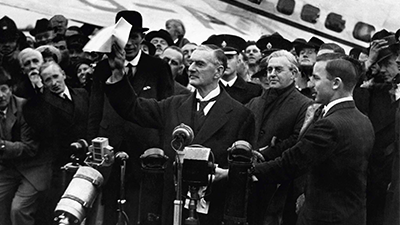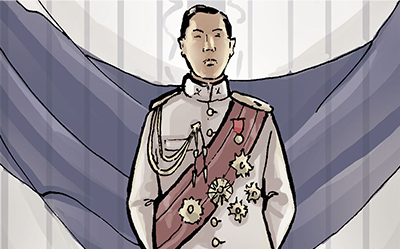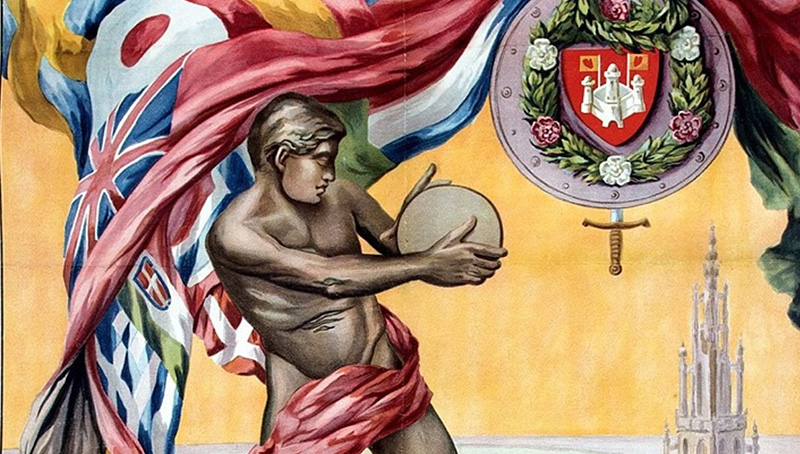Fascism and Internationalism
Teacher Resources
Driving Question: Why did extremist ideologies like fascism emerge during the interwar period?
In the shadow of World War I, some nations pushed for peace and cooperation while others promised strength through control. Examine the factors that drove these decisions, and the consequences that followed.
Learning Objectives:
- Understand the characteristics and origins of authoritarian ideologies such as fascism.
- Use close-reading skills to understand how and why diplomacy failed to prevent a second World War.
- Use the historical thinking practices of comparison and causation to analyze the rise of authoritarian governments in various regions of the world.
Vocab Terms:
- antisemitism
- appeasement
- authoritarian
- concentration camp
- dictator
- fascism
- internationalism
- Nazi
Opener: Fascism and Internationalism
To teach this lesson step, refer to page 2 of the Lesson 7.3 Teaching Guide.
Want to dig into more World War II resources? There are a lot of options on the World War II topic page.
As you get ready to examine extremist ideologies, step into the shoes of a citizen watching their nation fall to pieces.
The Road to Ruin
What did he know?: Appeasement
The scenario: Students role-play Neville Chamberlain as he made five crucial decisions about how to respond to Hitler in the lead-up to World War II:
- Anschluss (annexation of Austria), March 1938
- Munich Agreement, September 1938
- Occupation of Czechoslovakia, March 1939
- Anglo-Polish Guarantee, March 1939
- Invasion of Poland, September 1939
Prompt AI to provide students with a list of what Chamberlain knew at each step (military strength, public opinion, alliances, and Hitler’s demands). Using answers to these questions—and carefully fact-checking—students then generate arguments for and against appeasement, defending their decisions in a class discussion.
Why this is genius: By stepping into the shoes of a historical actor, students practice historical empathy. AI supports their research, but students must determine what evidence mattered most at the time.
As fascist leaders rose to power, democratic nations faced difficult choices. Discover how efforts to keep peace through compromise shaped the path to another war.
-
Guiding Questions
-
Before you read
Preview the questions below, and then skim the article. Be sure to look at the section headings and any images.
While you read
Look for answers to these questions:
- What did appeasement mean in this period?
- Why did Chamberlain support appeasement?
- How did appeasement affect Hitler’s views of Britain and France?
- How has appeasement been remembered since World War II?
After you read
Respond to these questions: Do you think France and Britain could have prevented a war with fascist Germany? Why or why not?
A New Threat
To teach this lesson step, refer to page 4 of the Lesson 7.3 Teaching Guide.
While war is a common topic in a social studies classroom, it does not diminish the challenging nature of the subject. Think about how to approach these topics with your students by taking a look this resource on Teaching Sensitive Topics in Social Studies.
Fascism emerged as a powerful force in the interwar period, but it wasn’t the only path forward. Compare how different ideologies competed to shape the future in a time of crisis.
-
Guiding Questions
-
Before you watch
Preview the questions below, and then review the transcript.
While you watch
Look for answers to these questions:
- What is the origin of the word fascism?
- Why is it useful to define fascism as a political behavior?
- How do fascists gain and maintain power?
- Why did fascists see internationalism as a threat?
- What makes total war important to fascist ideology?
After you watch
Respond to these questions: Which ideas or methods of fascism are similar to systems you’ve seen earlier in the course, such as imperialism or absolutism? How are they different?
Key Ideas
-
Guiding Questions
-
Before you watch
Preview the questions below, and then review the transcript.
While you watch
Look for answers to these questions:
- What did the Kellogg-Briand Pact try to achieve?
- What were some efforts at international cooperation in the 1920s?
- How does internationalism in the 1920s compare to earlier attempts in history?
- Why did the League of Nations struggle to succeed?
- What were the lasting impacts of the Kellogg-Briand Pact?
After you watch
Respond to this question: How does the failure of internationalism challenge or support the networks frame narrative?
Key Ideas
-
Guiding Questions
-
Before you read
Preview the questions below, and then skim the article. Be sure to look at the section headings and any images.
While you read
Look for answers to these questions:
- What actions showed the aggressive nature of Mussolini’s foreign policy?
- How did Germany and Italy justify their expansion?
- How did Japan explain its imperial expansion?
- What did the authoritarian regimes of Italy, Germany, Japan, and the USSR have in common?
- What were some ways the authoritarian regimes of Italy, Germany, Japan, and the USSR were different?
After you read
Respond to this question: Why do you think so many people supported authoritarian or fascist governments, even when those governments used violence and repression?
Closer: Fascism and Internationalism
To teach this lesson step, refer to page 6 of the Lesson 7.3 Teaching Guide.
Still looking for support for students in reading Graphic Biographies? This video, Decode a Graphic Biography, is a great tutorial, led by Trevor Getz.
Phibunsongkhram’s leadership in Thailand shows how authoritarianism during the interwar period wasn’t limited to Europe. His use of fascist ideas—adapted to local goals—challenges simple definitions and expands our understanding of global authoritarianism.
-
Guiding Questions
-
Before you read
Preview the questions below, and then skim the comic, paying attention to things like prominent colors, shapes, and types of text and fonts. How do you know where to start and in which direction to read? What’s in the gutters (the space between panels)? Who or what is the focus of the comic?
While you read
Look for answers to these questions:
- Why did Plaek Phibunsongkhram rename his country Thailand?
- What is one policy that shows Phibunsongkhram’s authoritarian rule?
- Why did Phibunsongkhram promote pad Thai?
- What happened to Phibunsongkhram after the war?
- How does the design of the graphic biography show that Phibunsongkhram was an authoritarian leader?
After you read
Respond to this question: How does this graphic biography of Phibunsongkhram support or challenge what you’ve learned about authoritarianism and fascism during the interwar period?
Choosing Cooperation
To teach this lesson step, refer to page 7 of the Lesson 7.3 Teaching Guide.
While fascist ideologies spread across the globe, some people imagined a future built on peace and cooperation. Using these materials, you’ll examine how internationalist thinkers responded to growing authoritarianism, and practice key sourcing skills in the process.







